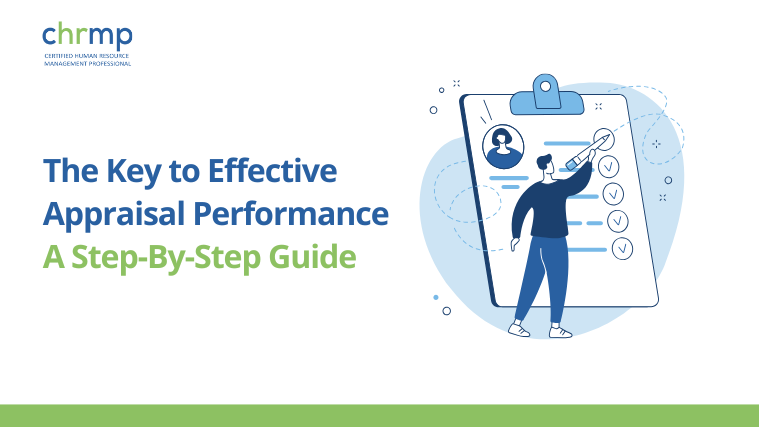

Are you seeking ways to elevate your organization’s performance appraisal process? In today’s competitive landscape, mastering the art of effective performance management is not just a necessity but a strategic advantage.
This guide promises to equip you with actionable insights and strategies to enhance your appraisal performance, ensuring that you, as HR professionals or aspiring entrants into the field, can unlock the full potential of your workforce
The journey to effective appraisal performance begins with a clear understanding of two key concepts: performance management and performance appraisal. While intertwined, they serve distinct purposes.
Performance management is the overarching framework that outlines how an organization supports and improves employee performance over time. It’s a continuous process that encompasses setting expectations, providing ongoing feedback, and fostering employee development.
On the other hand, performance appraisal is a more specific evaluation of an employee’s past performance against their set goals and objectives. It’s a critical component of performance management appraisal, offering a structured opportunity to assess achievements, discuss challenges, and plan for future objectives.
The integration of performance management and appraisal performance systems ensures a holistic approach to employee development and organizational growth.
A cornerstone of any effective appraisal system is the setting of clear, measurable objectives and expectations. This clarity is crucial, not just for employees to understand what is expected of them but also to provide a fair basis for evaluation. Performance appraisals for managers and employees alike should begin with setting specific, achievable goals aligned with the organization’s strategic direction.
One example of this in action is Adobe’s transition to a “Check-In” framework, which emphasizes setting clear expectations and providing regular feedback. This move has not only streamlined the appraisal process but also significantly improved employee engagement and performance.
Continuous feedback is the lifeblood of effective performance management. Unlike traditional models that rely on annual reviews, continuous feedback ensures that employees receive timely, constructive feedback on their performance throughout the year. This approach not only helps in addressing issues as they arise but also plays a crucial role in motivating and engaging employees.
Feedback for performance evaluation should be a two-way street, where employees also feel comfortable sharing their insights and concerns. Companies like Deloitte have embraced this model, shifting from infrequent, backward-looking appraisals to frequent, future-focused conversations that drive better results.
The actual conduct of the appraisal is a pivotal moment in the performance management cycle. It’s an opportunity not just to evaluate past performance but to foster a constructive dialogue about future goals and development opportunities. Performance appraisal of employees should be objective and balanced, incorporating both achievements and areas for improvement.
Various organizations implement different methods of performance appraisal to evaluate the performance of their employees.By implementing various methods of appraisal, organizations can tailor their approach to best meet their specific needs and objectives.
For instance, utilizing 360-degree feedback can offer comprehensive insights into an employee’s performance, incorporating perspectives from peers, subordinates, and supervisors. This method has been effectively adopted by organizations like GE, which transitioned from a rigid appraisal system to a more flexible and continuous Performance Development process.
The ultimate goal of any appraisal process should be to foster employee development and growth. Performance appraisal and employee performance are closely linked, with the outcomes of the appraisal process directly informing personal development plans. This step ensures that appraisals are not just retrospective evaluations but also forward-looking plans that align with both individual aspirations and organizational needs.
Microsoft’s shift towards a culture that celebrates a growth mindset exemplifies the power of using appraisal outcomes for development. By focusing on learning and improvement, Microsoft has not only boosted its employee morale but has also seen remarkable innovations and performance improvements.
Let’s dive deeper into these steps through the lens of Zenith Innovations, a tech start-up specializing in renewable energy solutions. They encountered difficulties in aligning their team and retaining key talent, issues that were rooted in an inadequate performance management system. The process of revamping this system provides a tangible demonstration of how our guide’s steps can be applied in practice.
Step 1: Zenith began with educating its workforce on the importance of performance management versus performance appraisal through workshops, aligning everyone towards a common goal.
Step 2: Leadership then set clear, measurable objectives aligned with the company’s strategic goals, making sure every team member knew their role and how it contributed to the larger picture.
Step 3: To foster a culture of continuous improvement, Zenith introduced monthly check-in meetings between managers and their teams, designed for ongoing feedback and growth discussions.
Step 4: At the formal appraisal stage, Zenith adopted a 360-degree feedback approach, allowing for a comprehensive view of an employee’s performance, focusing on constructive criticism and recognition of achievements.
Step 5: Utilizing the outcomes of the appraisals, Zenith developed personalized plans for each employee, including targeted training and mentorship opportunities, encouraging employees to take ownership of their development.
This overhaul led to a transformative change within Zenith. The shift towards continuous feedback and development resulted in a more agile workforce, capable of adapting quickly to the industry’s fast pace.
Employees felt more valued and understood, leading to higher engagement and job satisfaction levels. Leadership noted a significant improvement in team cohesion and productivity, a testament to the effectiveness of the revamped performance management and appraisal process.
Elevating your performance appraisal process is about creating a culture of engagement, motivation, and continuous improvement. Effective appraisal performance is not a one-size-fits-all process. It requires a thoughtful implementation of strategies that are tailored to the unique needs and culture of your organization.
By following these structured steps—from understanding the foundational elements of performance management and appraisal to setting clear goals, embracing continuous feedback, conducting meaningful appraisals, and focusing on development—HR professionals can turn the appraisal process into a strategic advantage for their organization.
As we navigate the complexities of modern HR practices, it becomes clear that effective appraisal performance is not just about evaluating the past; it’s about inspiring a future where every employee is empowered to reach their full potential. Let this guide be your roadmap to unlocking the transformative power of performance appraisals, driving both individual and organizational success.

© 2007-2025 CHRMP| All Rights Reserved | Powered by Ripples Learning & Research Private Limited
